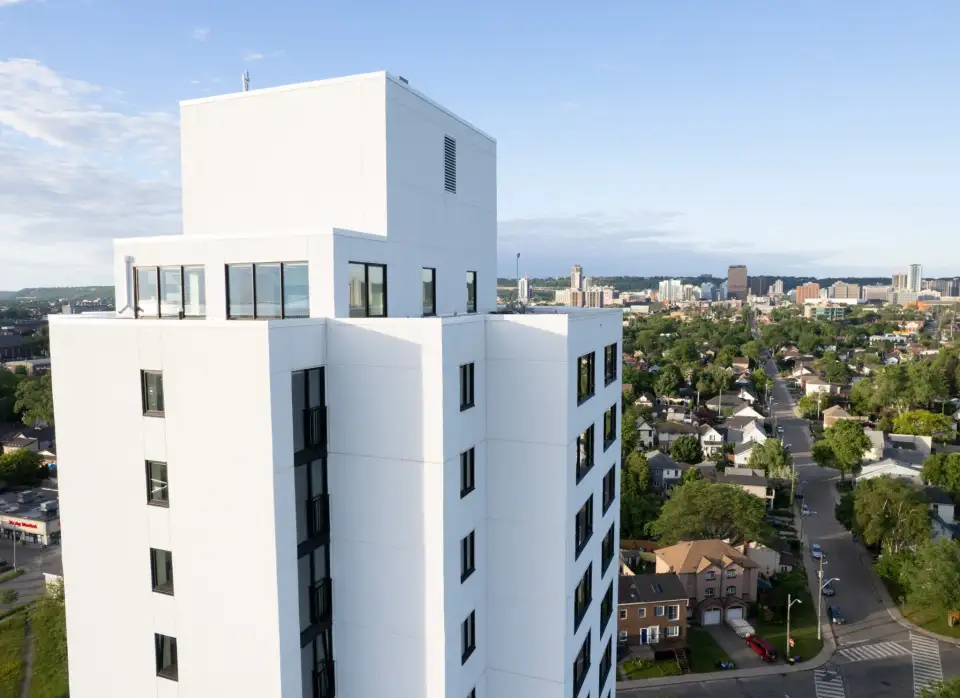Deep energy retrofits (DERs) are more than just basic improvements; they are substantial, systems-wide upgrades to a building’s enclosure, as well as its heating, cooling, ventilation, lighting, and hot water systems. According to Natural Resources Canada, DERs can reduce a building’s energy consumption by 50% to 70%. The benefits of DERs go beyond making buildings more efficient; they can also enhance resilience during crises like power outages or extreme smoke events, while also improving occupant comfort and health. When paired with renewable energy systems, they also reduce reliance on grid electricity and drive operational carbon down even further, in some cases cutting buildings' greenhouse gas emissions by 80% to 100%.

Any widescale decarbonization plan requires DERs, as it is estimated that 80% of existing buildings within North America will still be in use in 2050. That figure may be even higher in some European nations. “Grandfathering in” such a high percentage of buildings is simply not a tenable policy.
Unfortunately, there are numerous obstacles to the widespread implementation of DERs. For owners of private and commercial properties, the initial costs of performing a DER can be substantial, and many individuals simply do not have the resources to finance such projects of this scope without significant assistance. While these improvements do eventually pay for themselves and are necessary steps on the road to decarbonization, most people will not be willing to go into debt to achieve these ends without incentives that go beyond what currently exists.
Solution providers also face several barriers to scaling up their operations, and some of these difficulties were described in a recent report released by the Pembina Institute, a non-partisan think tank based in Canada that advocates for policies to facilitate the transition to a cleaner, decarbonized economy. The report, Deep Retrofit Supply Chain Analysis: Scaling capacity to decarbonize Canadian residential buildings, may be centered on the Canadian market, but its findings and recommendations are applicable in a variety of other nations, most notably the US.
After surveying 80 providers from across Canada who are involved in the implementation of DERs, their findings indicate that providers believe the primary obstacles to scaling come from two sources.[1] The first is a lack of demand for deep retrofits due to cost, complexity, and lack of familiarity with the nascent industry and emerging technologies. The other issue they raise concerns regulatory barriers. In fact, the top barrier identified in the report was that “governments have not put in place the necessary regulations requiring deep building decarbonization that would send a clear signal that it is worth investing in market growth.”
As lead authors Raidin Blue and Betsy Agar write in the executive summary, “To scale up [providers] need regulations to drive demand, such as building energy performance standards, and investments in training and upskilling to ensure the necessary skilled workforce is in place.” The authors conclude with four recommendations to help alleviate these issues:
1. Provide market certainty to stakeholders by implementing regulations that require deep building decarbonization.
2. Drive demand by providing better information about the benefits of deep retrofits, helping to build trust in the industry and reduce complexity.
3. Work with utilities, provincial (or state) governments, and local agencies to encourage additional grants and incentives to owners, reducing the high cost of new technologies used in DERs and spurring growth and competition among innovators.
4. Foster a more inclusive industry culture by raising awareness and removing barriers to access for equity-deserving groups, and by requiring the employment of equity-deserving groups.
You can read the full report here.
The cover image is of the Ken Soble Tower, an EnerPHit project in Hamilton, Ontario. Photo courtesy of ERA
[1] Only 59 participants were included in the data analysis, as the remaining 21 failed to complete at least two-thirds of the survey.